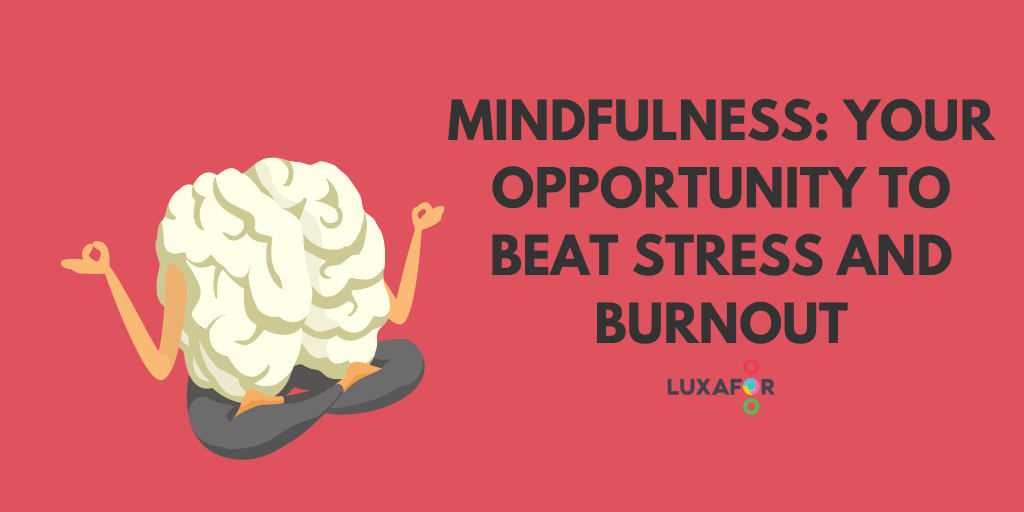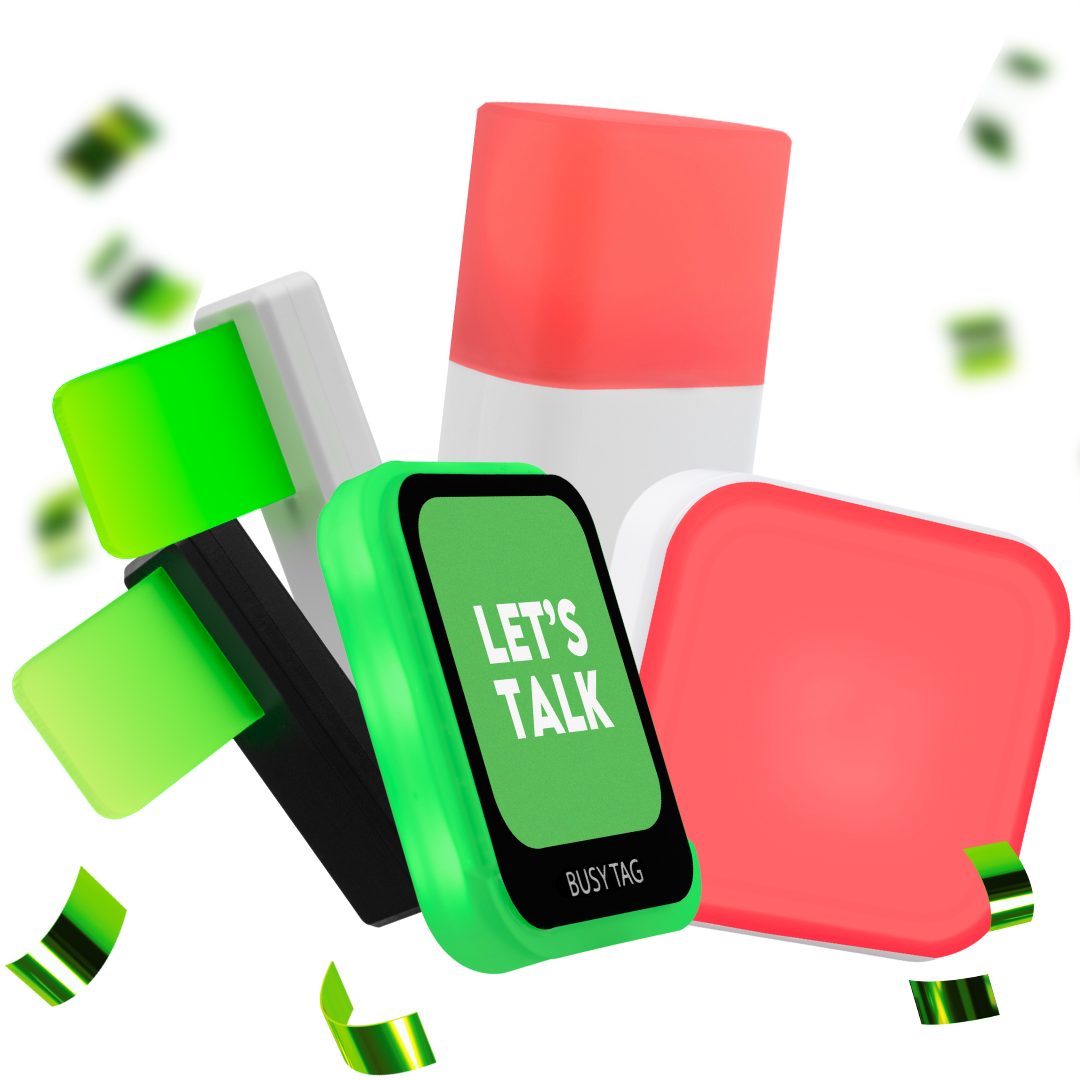How to Beat Work Burnout With Mindfulness
- Updated on: February 3, 2025
Stress is a growing productivity issue worldwide and we have written about stress and burnout before. This is a topic that needs to be addressed again and again until all effective methods have been found and implemented in our everyday lives.
One of the widely discussed methods of avoiding stress is mindfulness – most of us have heard this term. But do we actually know what it means, understands how to interpret it and what the benefits of practicing mindfulness techniques are?
Origins of mindfulness
Mindfulness has a long history, originating from Buddhism knowledge, where the word actually means “moment-to-moment awareness of present events“, but also “remembering to be aware of something“.
Bear in mind that Buddhism started during the 5th century BCE. And, if mindfulness knowledge has survived for such a long time, there must be at least a moderate amount of truth in its practices.
Fast forward to the 20th century, when Jon Kabat-Zinn founded the Mindfulness-Based Stress Reduction (MBSR) program at the University of Massachusets which sparked the application of mindfulness ideas and practices in a more modern approach. This program originally entails three formal techniques: mindfulness meditation, body scanning, and simple yoga postures. It is based on non-judging, non-striving, acceptance, letting go, beginner’s mind, patience, trust, and non-centering.
“Mindfulness Has Been Shown To Improve Focus, Regulate Emotions, Improve Cognitive Flexibility, And Protect Against Stress. It Involves Being Aware Of Your Thoughts And Allowing Yourself To Become Fully Present,” Says Psychologist Kim Chronister, PsyD.
Mindfulness nowadays and how to use it
Mindfulness is gaining increased popularity as a practice in daily life, apart from Buddhist insight meditation and its application in clinical psychology. It has grown considerably through time and acquired many definitions, all being focused on the same value: being in the moment.
Being in the moment entails avoiding rumination (past problems), worry (future problems), and distraction (present problems). There is always space for interpretation of terms like this, but the main focus of somebody trying to practice mindfulness should stay in the moment and avoid irrelevant stressors.
Based on this knowledge, any office can start to work on a mindfulness program. Companies like IKEA, Ford Motor Company, Goldman Sachs, Proctor and Gamble, and others already offer Mindfulness training for their employees and it’s working out really well for them.
There are several proven techniques you and your team can use to practice mindfulness and become mindful. So read on and inspire yourself to change yourself and your company for the better:
1. Practice breathing exercises

Source: Unsplash
Your breath can be a very grounding anchor to focus on, so why not try this technique for being in the moment? An easy way to make this a habit would be to stop everything you’re doing and focus only on your breath for one minute each hour. You can just focus on your inhaling and exhaling process by making it slower and taking deeper breaths, and get more advanced over time with special breathing exercises.
Breathing exercises are a great way to manage stressful situations and the best part is- you can practice literally anywhere.
One way to do this is to try the 3-1-5 technique, which will help you practice breathing exercises. Inhale for 3 seconds, hold your breath for 1 second and inhale for 5 seconds. If you do this for just one minute each hour, you’ll find yourself more focused and relaxed, which means better alertness toward the tasks at hand.
You might wish to spend a little bit of time to take a look at this post for a complete in-depth guide to the science and methods of breathing techniques that will definitely help you achieve the results you crave for! In short, the ADAA recommends taking deep breaths and counting to 10 slowly.
There is a lot of information on achieving mindfulness through breathing on the internet, and you can check out this compilation of the best practices on dealing with anxiety from real therapists here.
You can also check out the Greatist top 6 under-10-minute breathing exercises to ease your mood immediately both in the work environment and at home.
2. Meditate

Source: Unsplash
Meditation is one of the most powerful techniques of mindfulness. Whether you have never meditated before, need a refresher, or are just getting started, there is no shortage of books, articles, apps, and free videos and podcasts available. Try getting your hands on “Search Inside Yourself” by Chade-Meng Tan or use the “Stop, Breathe & Think” app for guided sessions.
If your budget allows, it is always a good idea to invest in a meditation professional who could come in and teach you and your team the best-personalized techniques to use in the office and at home.

Source: Unsplash
The way you decide to start your morning can have a major impact on how the rest of your day will go. You can start your day randomly each morning if you want. But creating a repetitive, meaningful morning routine may be the better route to take if you’re looking for the most productive and stress-free use of your time.
Try to wake up with one alarm and ditch the snooze button, then have some time to yourself to become more present. For some, the ritual of a cold shower followed by morning coffee or tea could be the perfect mindfulness practice. For others – doing breathing exercises or meditating while still in bed. And we all know that technology is a major contributor to stress.
Try not to look at your phone, computer, or TV screens first thing in the morning. This will definitely help you become more aware of yourself and your surroundings. The morning routine is something you have to personalize to your own needs, but don’t forget to base it on the interest of stress-free life.
4. Unplug and set boundaries

Source: Unsplash
In such a fast-paced world it is easy to forget to relax. Deadlines, obligations, society, etc are making us think about irrelevant problems at irrelevant moments.
“People Generally Need To Detach From Their Work And Their Workspace To Recharge Their Internal Resources. Options Include Walking, Reading A Book In Another Room, Or Taking The All-Important Lunch Break, Which Provides Both Nutritional And Cognitive Recharging,” Says John P. Trougakos, An Assistant Management Professor At The University Of Toronto Scarborough And The Rotman School Of Management.
The only way to reach mindfulness is to remember to unplug. What it means is basically leaving everything behind for a period of time.
No brain is built to work non-stop for 9 hours. Take many small breaks during the day to recollect your thoughts and manage tasks more efficiently. And, when you finally call it a day, don’t bring work home. Leave it there and instead of worrying about deadlines on your way home, focus on your plans for the weekend.
Oh, and don’t check your work emails during the weekend or vacation. Leave working hours for work and weekends for yourself. These are the times you should completely unplug from work stressors and enjoy your free time.
5. Create rituals that enhance your awareness
One simple rule with mindfulness is to follow through each day, not just do something once-a-week, then forget about it. It is important to practice becoming more aware of yourself and your surroundings all the time, as the more you practice it, the more it comes naturally.
The best way to do this is to create rituals that you can do every day and make sure you don’t miss a day. Start small and simple. You could start doing breathing exercises before sleep. Or you could spend 2 minutes in the morning sets the mood for the day by telling yourself a great inspirational affirmation.
Maybe you could make a ritual of drinking calming tea in the evening, and while you’re at your cuppa, thinking about the day gone by and how you can improve tomorrow. Or take your first steps towards meditating by setting a timer to 5 minutes and trying to clear your thoughts and not think about anything.
It could literally be any ritual that comes to your mind, as long as you pay close attention to something during that time. Your feelings, your surroundings, the colors, the sounds, the emotions, the memories… As long as you become aware of something, in time you’ll realize that you notice more and more things. And that is becoming aware – the ultimate goal of mindfulness.
But the toughest one with creating rituals is actually doing it every day. A solution to this would be to place a motivating calendar somewhere you’d see it every day. A calendar that is designed specifically for marking off each day you do the ritual and then staying in front of you and reminding you to follow through each day, so you would not break the chain.
















